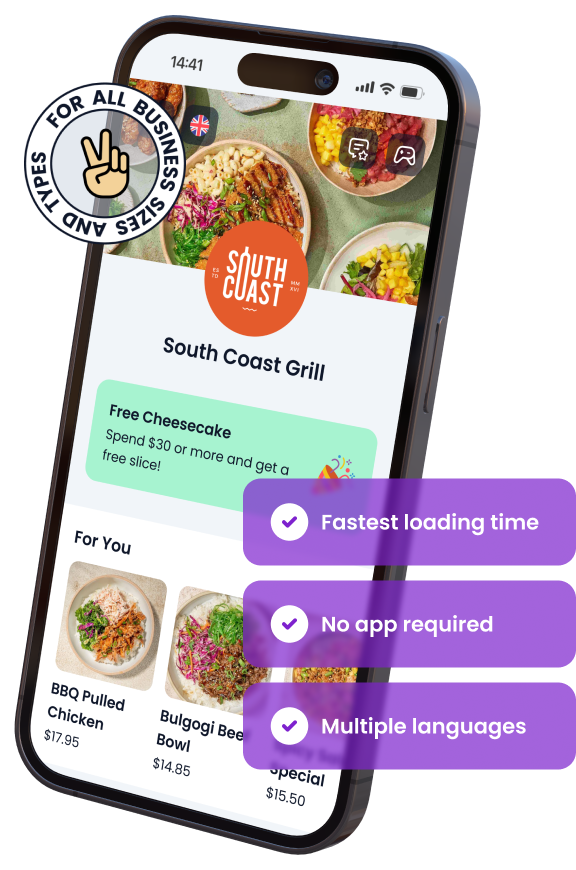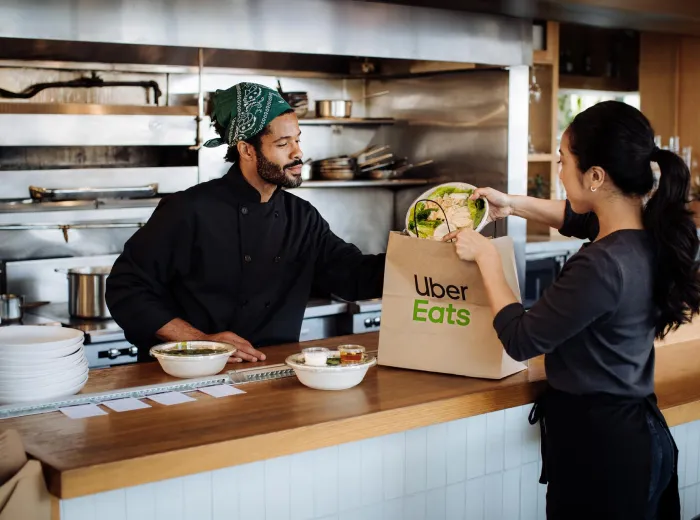

How Much Money Do Restaurant Owners Make Each Year in New Jersey?
New Jersey is home to a vibrant and diverse food scene, making it an attractive location for aspiring restaurant owners. But while the potential for success is high, one of the most common questions people have is: how much do restaurant owners actually earn each year in this state? The answer depends on a wide variety of factors, including the type of restaurant, location, and how effectively the business is managed.
For those thinking of opening a restaurant in New Jersey, understanding the potential earnings and the variables that influence profit is essential. While some restaurant owners achieve substantial financial success, others face challenges that can significantly impact their bottom line. In this guide, we will dive deep into the average income of restaurant owners, explore key factors that affect profitability, and provide insights into how to maximize your earnings in this competitive market.
Whether you’re running a small, family-owned eatery or a high-end dining establishment, knowing what to expect financially can help you make smarter decisions and increase your chances of long-term success.
Would you like to listen our deep-dive conversation about this article?
Factors Influencing Restaurant Owner Earnings in New Jersey
The income of a restaurant owner in New Jersey is shaped by a variety of factors, from the type of restaurant to the location and how the business is operated. Understanding these key variables can help prospective and current owners set realistic expectations and identify areas where they can boost profitability. Below, we will explore the major factors that impact restaurant owner earnings in the state.
Type of Restaurant: Casual, Fine Dining, or Fast Food?
The type of restaurant you own plays a significant role in determining your revenue potential. Each type has different customer expectations, price points, and operational costs, all of which affect profitability.
- Casual Dining: These restaurants typically offer moderate pricing and a more relaxed atmosphere. They often have a steady flow of customers but may face higher labor costs due to table service.
- Fine Dining: Fine dining establishments usually charge higher prices and can generate significant profits, but they also come with higher operational costs, including premium ingredients and experienced staff.
- Fast Food/Quick Service: Quick-service restaurants have lower price points, but higher turnover rates can make them highly profitable if managed efficiently.
Location Impact on Revenue: Urban vs Suburban Areas
Where your restaurant is located can dramatically affect your earnings. Location determines customer foot traffic, real estate costs, and even your target market.
- Urban Areas: Restaurants in cities like Newark or Jersey City often enjoy high foot traffic and a larger customer base but must contend with expensive rents and stiff competition.
- Suburban Areas: In contrast, suburban restaurants tend to have lower overhead costs but may rely more on regular, loyal customers rather than high-volume walk-ins.
New Jersey-Specific Cost of Living and Its Effect on Profits
The high cost of living in New Jersey can influence everything from labor costs to the price customers are willing to pay for a meal. This can impact your restaurant’s pricing strategy and profit margins.
- High labor costs due to competitive wages
- Higher prices for ingredients and supplies
- Customers may have less disposable income, affecting dining frequency
Operating Hours: Does Being Open More Mean More Profit?
The number of hours a restaurant operates also affects potential earnings. However, staying open longer doesn’t always guarantee higher profits, especially if operational costs outweigh revenue.
- Breakfast and Brunch Service: Adding morning hours can bring in extra income but requires additional staffing and supplies.
- Late-Night Operations: Staying open late might capture a niche market, but could lead to increased labor and security costs.
Staffing and Labor Costs in New Jersey: A Major Consideration
Staffing is one of the largest expenses for restaurant owners in New Jersey, due to the state’s relatively high minimum wage and competitive job market. Managing labor costs efficiently can greatly influence your bottom line.
- Minimum wage in New Jersey is higher than the national average
- Tips contribute to server wages, but non-tipped employees like cooks often command higher pay
- Efficient staffing models, such as part-time or flexible scheduling, can help reduce costs
Menu Pricing Strategy and Customer Spending Habits
The prices on your menu must balance customer expectations and operational costs. Setting prices too high could drive customers away, while setting them too low might not cover your expenses.
- Cost of Ingredients: Fluctuations in ingredient prices should be reflected in your menu pricing strategy.
- Customer Willingness to Pay: Understanding your market’s spending habits can help you set optimal prices that maximize revenue without deterring customers.
By considering all of these factors, restaurant owners in New Jersey can better understand what affects their earnings and take steps to improve profitability.
Average Salary Range for Restaurant Owners in New Jersey
The average income for restaurant owners in New Jersey varies widely based on several factors, including the type of restaurant, its location, and how effectively the business is managed. On average, restaurant owners in the state can expect to earn anywhere from modest salaries to substantial profits, depending on the unique circumstances of their business. In this section, we’ll break down the different aspects that influence the salary range for restaurant owners in New Jersey.
What is the General Income Range for Restaurant Owners?
In New Jersey, the general income range for restaurant owners typically falls between $50,000 and $150,000 per year, though some earn more, and others earn less. This range is determined by the size of the establishment, customer volume, and operational efficiency.
- Small, family-owned restaurants may earn owners closer to the lower end of the spectrum.
- Larger or well-established restaurants in prime locations can generate much higher earnings.
- Franchise restaurant owners may see more stable, predictable income but with higher costs.
How Income Varies by Restaurant Type and Size
The type and size of a restaurant are major determinants of an owner’s income. Different types of establishments have unique earning potential, based on customer spending and overhead costs.
- Fast Food/Quick Service Restaurants: These tend to generate high-volume sales but with lower profit margins, often leading to yearly earnings in the $50,000 to $80,000 range.
- Casual Dining Restaurants: Casual dining establishments may bring in annual earnings between $70,000 and $120,000, depending on location and customer base.
- Fine Dining Restaurants: With their higher prices and more exclusive customer base, fine dining restaurants can lead to earnings of $100,000 to $200,000+, especially if the restaurant gains recognition or awards.
Franchise Owners vs Independent Restaurant Owners: Who Earns More?
Owning a franchise versus running an independent restaurant comes with different financial implications. While franchise owners benefit from established brand recognition and support, they also face higher fees and less operational flexibility.
- Franchise Owners: On average, franchise owners in New Jersey earn between $75,000 and $150,000 per year, depending on the franchise’s success and location. However, upfront costs and ongoing franchise fees can cut into this income.
- Independent Restaurant Owners: These owners have more control over their earnings, with some making less than franchise owners, but others surpassing them if the restaurant gains popularity or becomes a local staple.
Seasonal Variations in Earnings for Restaurant Owners
Seasonal factors also play a role in the income of restaurant owners in New Jersey. Tourist seasons, holidays, and weather patterns can significantly affect customer traffic and sales.
- Summer and Tourist Season: Restaurants in shore towns or popular tourist destinations may see a large surge in profits during the summer months, often leading to higher overall yearly earnings.
- Off-Season Impact: In contrast, restaurants located in these areas may experience slower business during the off-season, causing some fluctuation in income.
- Holiday Periods: The holiday season can be a profitable time for restaurants offering catering, special menus, or event hosting, contributing to higher earnings during these periods.
Understanding the average salary range and the variables that impact restaurant earnings can help current and prospective owners plan more effectively and set realistic financial goals for their business.
How to Maximize Your Restaurant’s Profitability
Maximizing profitability is one of the biggest challenges for restaurant owners in New Jersey, where operational costs, labor, and competition can be high. However, with careful planning and strategic actions, restaurant owners can boost their revenue while keeping costs under control. Below, we’ll explore actionable steps you can take to increase profitability and ensure your restaurant thrives.
Optimizing Menu Pricing Without Losing Customers
Setting the right prices for your menu items is key to maximizing profits while still maintaining customer loyalty. A well-priced menu balances your operational costs with what customers are willing to pay.
- Menu Engineering: Analyze which menu items are most popular and most profitable, then promote these items more prominently.
- Portion Control: Ensure portion sizes are consistent to avoid waste and manage food costs.
- Seasonal Pricing: Adjust pricing for seasonal items or ingredients that fluctuate in cost throughout the year.
- Upselling: Train staff to upsell higher-margin items like appetizers, drinks, or desserts.
Reducing Overhead Costs: Rent, Utilities, and Inventory Management
Lowering overhead costs is a critical step toward boosting your bottom line. Efficient inventory management and cost-cutting measures can make a big difference without affecting customer satisfaction.
- Negotiate Rent: If possible, negotiate better lease terms with your landlord, especially if you’re a long-term tenant or experiencing slower business periods.
- Energy Efficiency: Invest in energy-efficient appliances and lighting to reduce utility costs.
- Inventory Control: Implement a just-in-time inventory system to reduce food waste and spoilage. Regularly track food usage to minimize over-ordering.
- Vendor Negotiations: Build strong relationships with suppliers and negotiate better prices for bulk orders or long-term contracts.
Importance of Effective Marketing and Promotions in Boosting Revenue
Marketing plays a crucial role in driving foot traffic and boosting revenue. In today’s digital age, a well-rounded marketing strategy is essential for any restaurant aiming to maximize its profitability.
- Digital Marketing: Use social media, email newsletters, and a user-friendly website to engage customers and keep them informed about new dishes, events, or promotions.
- Loyalty Programs: Implement a customer loyalty program to encourage repeat visits and build a loyal customer base.
- Online Reviews and Reputation Management: Encourage satisfied customers to leave positive reviews on platforms like Google or Yelp. A strong online reputation can significantly increase new customer visits.
- Special Events and Promotions: Host themed nights, happy hours, or special promotions to draw in more customers during slow periods.
Controlling Labor Costs: Balancing Staffing Needs and Efficiency
Labor is one of the largest expenses for restaurants, but effective management can help you maintain service quality while keeping costs under control.
- Efficient Scheduling: Use scheduling software to align staff hours with peak times, avoiding overstaffing during slower periods and understaffing during busy hours.
- Cross-Training Staff: Train employees to perform multiple roles (e.g., servers can assist with hosting or bar duties) to improve efficiency and reduce the need for additional hires.
- Use Part-Time Staff: During off-peak hours or seasons, consider hiring part-time employees to reduce labor costs without sacrificing service quality.
Embracing Technology: POS Systems, Online Orders, and Delivery Platforms
The right technology can streamline operations, reduce errors, and boost profitability. Investing in tech tools can pay off in both efficiency and customer satisfaction.
- POS Systems: Modern POS systems track sales, inventory, and customer preferences, helping you make data-driven decisions about menu items and pricing.
- Online Ordering: Offer online ordering through your website or a third-party app, making it easier for customers to order from you and increasing sales, especially for takeout or delivery.
- Delivery Partnerships: Partner with delivery platforms like DoorDash or UberEats to reach a broader audience, but keep an eye on commission fees to ensure they don’t cut too deeply into your profits.
By focusing on these key areas—menu pricing, overhead cost reduction, effective marketing, labor management, and technology—you can significantly increase your restaurant’s profitability. Small improvements in each of these areas can lead to a substantial boost to your bottom line.
Taxes, Licenses, and Fees That Affect Restaurant Profits in New Jersey
Running a restaurant in New Jersey comes with various tax obligations, licensing requirements, and fees that can significantly impact your overall profitability. Understanding these financial responsibilities is crucial to managing your budget effectively and ensuring compliance with state regulations. In this section, we’ll cover the key taxes, licenses, and fees that restaurant owners need to account for in New Jersey.
Sales Tax and Meal Tax Rates in New Jersey: How They Impact Earnings
Sales tax in New Jersey directly affects restaurant revenue, as it is applied to most food and beverage sales. Restaurant owners must collect this tax from customers and remit it to the state, which can affect cash flow if not managed properly.
- Sales Tax Rate: The current New Jersey sales tax rate is 6.625%, applied to most restaurant food and beverage sales.
- Tax-Exempt Items: Certain items, such as groceries or cold food to-go, may be exempt from sales tax, while prepared food consumed on-site is taxable.
- Meal Tax Considerations: Some municipalities may have additional meal taxes, especially in popular tourist areas, which can further impact pricing and profits.
Licenses and Permits: A Cost Breakdown for New Jersey Restaurant Owners
Obtaining the necessary licenses and permits is a critical, yet often costly, part of running a restaurant in New Jersey. The specific permits required can vary based on your location and the type of establishment.
- Food Service License: Every restaurant must have a food service license to legally operate. Costs typically range from $100 to $1,000, depending on the size and location of the business.
- Liquor License: If you plan to serve alcohol, a liquor license is essential and can be one of the most expensive permits to obtain. In New Jersey, liquor licenses can range from $250,000 to over $1 million, depending on the municipality.
- Health Department Permits: These include regular inspections to ensure food safety standards are met. The cost for these permits generally ranges from $200 to $500 annually.
- Signage Permits: If you plan to display signage, you’ll need a permit, which can cost $50 to $500, depending on the size and placement of the sign.
Property and Business Taxes: What to Expect
Owning or leasing property in New Jersey comes with significant tax obligations. Understanding these taxes and budgeting for them is essential for managing your restaurant’s finances effectively.
- Property Taxes: New Jersey has some of the highest property taxes in the U.S. If you own your restaurant’s building, you may face annual property tax rates that can significantly impact your profit margins.
- Average property tax rates can range from 1.89% to 2.47% of property value, depending on the county.
- Business Taxes: All businesses in New Jersey, including restaurants, must pay corporate business taxes. The tax rate is 9% on income over $100,000, which directly affects your restaurant’s bottom line.
Understanding Payroll Taxes for Employees
In addition to sales and business taxes, restaurant owners in New Jersey must also handle payroll taxes for their employees. These taxes are essential to remain compliant with both state and federal regulations.
- Social Security and Medicare (FICA): Employers are required to contribute 6.2% for Social Security and 1.45% for Medicare for each employee’s wages.
- Unemployment Insurance (UI): Employers must pay New Jersey’s state unemployment insurance tax, which can vary but generally ranges from 0.3% to 5.4% of employee wages.
- Disability Insurance (DI): Employers in New Jersey are also required to contribute to state disability insurance for their employees, typically around 0.5%.
Understanding the impact of taxes, licenses, and fees on your restaurant’s financial health is essential to maintaining profitability. These costs can quickly add up, but with careful planning and management, you can ensure your restaurant remains compliant while optimizing for profitability.
What is the Profit Margin for Restaurants in New Jersey?
Profit margin is a key metric for any restaurant owner, indicating the percentage of revenue that remains after accounting for all operating expenses. In New Jersey, where the cost of living and doing business is relatively high, understanding and managing your profit margin is crucial for long-term success. In this section, we’ll explore how to calculate profit margins, what the industry benchmarks are, and strategies to improve your margins.
How to Calculate Profit Margins for Your Restaurant
Calculating your restaurant’s profit margin is essential to understanding its financial health. The formula for profit margin is straightforward, but it’s important to factor in all relevant costs.
- Formula:
Profit Margin (%) = (Net Profit / Total Revenue) x 100 - Net Profit: This is the amount of money left after subtracting all operating costs (including rent, payroll, taxes, utilities, and supplies) from your total revenue.
- Total Revenue: This includes all sales from food, beverages, catering, and any other services provided by your restaurant.
For example, if your restaurant generates $500,000 in annual revenue and your operating costs amount to $450,000, your net profit is $50,000. In this case, your profit margin would be 10%.
Industry Benchmark: What is Considered a Healthy Profit Margin?
Profit margins in the restaurant industry are typically lower than in other sectors due to high operating costs and competitive pricing. However, understanding the industry benchmarks can help you set realistic financial goals.
- Average Profit Margin: In New Jersey, the average profit margin for restaurants typically ranges between 3% and 6%.
- Low-End (3%): Often seen in fine dining or highly competitive areas with high operational costs.
- High-End (6%+): More common in fast-casual or quick-service restaurants where costs are lower, and turnover is higher.
- Healthy Profit Margin: A profit margin of 5% to 10% is considered healthy and achievable for many well-managed restaurants.
Comparing Profit Margins for Different Types of Restaurants
Different types of restaurants experience varying profit margins based on their cost structure, target market, and pricing strategy. Here’s how profit margins generally compare across restaurant types in New Jersey:
- Quick-Service Restaurants (QSRs):
- Higher Margins: Typically between 6% and 9% due to lower food costs, minimal staff, and high turnover rates.
- Casual Dining Restaurants:
- Moderate Margins: Often in the 4% to 7% range, as these restaurants have higher labor and ingredient costs but benefit from a loyal customer base.
- Fine Dining Restaurants:
- Lower Margins: Between 3% and 5%, as high operational costs (premium ingredients, skilled staff) can offset higher menu prices.
Strategies to Increase Your Profit Margin in New Jersey
Improving your profit margin requires focusing on both increasing revenue and reducing costs. Below are some actionable strategies for restaurant owners in New Jersey:
- Increase Average Ticket Size:
- Encourage customers to spend more by offering combo meals, upselling sides, or featuring premium-priced specials.
- Manage Labor Costs Effectively:
- Use scheduling software to optimize labor during peak and slow hours. Consider cross-training staff to improve efficiency and reduce the need for extra hires.
- Control Food Costs:
- Regularly review your suppliers and negotiate better prices or bulk discounts. Use inventory management software to reduce waste and ensure portion control.
- Optimize Your Menu:
- Identify high-margin dishes and promote them heavily. Simplify your menu to reduce the number of low-profit or slow-moving items.
- Energy Efficiency:
- Invest in energy-efficient appliances and lighting to lower utility bills. Simple changes like installing programmable thermostats can significantly cut costs.
By focusing on these strategies, you can gradually increase your profit margin and improve the financial health of your restaurant, even in a high-cost environment like New Jersey.
How to Determine Your Restaurant’s Financial Health
Understanding the financial health of your restaurant is essential for long-term sustainability. A clear view of your financial metrics allows you to identify strengths, weaknesses, and areas for improvement. In this section, we’ll break down the key financial indicators every restaurant owner should monitor, how to manage cash flow, and the importance of break-even analysis in determining your business’s viability.
Key Financial Metrics: Revenue, Profit, and Expenses
The foundation of your restaurant’s financial health lies in tracking three critical metrics: revenue, profit, and expenses. Regularly reviewing these numbers gives you a snapshot of your business’s performance.
- Revenue: This is the total amount of money your restaurant generates from all sources, including food and beverage sales, catering, and events. Keep track of:
- Daily/Weekly Revenue: Helps identify trends and seasonal variations.
- Revenue per Seat Hour (RevPASH): Measures the efficiency of revenue generation per available seat.
- Profit: This is what remains after you subtract your total operating expenses from your revenue. Profit can be:
- Gross Profit: Revenue minus the cost of goods sold (COGS), which includes ingredients, drinks, and packaging.
- Net Profit: What’s left after accounting for all operating costs, such as rent, utilities, payroll, and taxes.
- Expenses: Understanding and managing your expenses is key to maintaining profitability. Major expense categories include:
- Cost of Goods Sold (COGS): Fluctuating ingredient costs can affect margins.
- Labor Costs: Payroll, benefits, and taxes.
- Overhead Costs: Rent, utilities, marketing, and general maintenance.
Importance of Cash Flow Management
Positive cash flow is crucial for the day-to-day operations of your restaurant. Even if your restaurant is profitable on paper, poor cash flow can lead to operational difficulties, such as not being able to pay suppliers or staff on time.
- Tracking Cash Inflows and Outflows:
- Cash Inflows: Include revenue from daily sales, catering orders, and gift cards.
- Cash Outflows: Consist of payroll, vendor payments, taxes, and other expenses.
- Tips for Improving Cash Flow:
- Manage Inventory Efficiently: Avoid overstocking, which ties up cash in unused inventory.
- Negotiate Payment Terms: Work with suppliers to extend payment terms, allowing you more time to manage cash flow.
- Offer Gift Cards or Prepaid Packages: These bring in immediate cash, even if the service or product is provided later.
Break-Even Analysis: When Does Your Restaurant Become Profitable?
Conducting a break-even analysis helps determine how much revenue you need to generate to cover your operating expenses before making a profit. This calculation is essential for understanding when your restaurant will become profitable and what adjustments are needed to reach that point.
- Break-Even Formula:
Break-Even Point = Fixed Costs ÷ (Sales Price per Unit – Variable Cost per Unit)- Fixed Costs: These remain constant regardless of sales volume, such as rent, insurance, and salaries.
- Variable Costs: These fluctuate with sales volume, such as ingredients and labor for hourly staff.
- Steps to Perform a Break-Even Analysis:
- Determine Fixed Costs: Include expenses like rent, utilities, and insurance.
- Calculate Variable Costs per Sale: For example, how much does each dish cost in terms of ingredients and direct labor?
- Set Sales Price per Unit: Average price of a meal or drink.
- Run the Numbers: Once you have the figures, you can calculate how many sales are needed to cover all your costs.
By calculating your break-even point, you can identify how many customers or orders are needed to cover your costs and start generating profit. This insight allows you to adjust pricing, reduce expenses, or optimize sales strategies.
Regular Financial Reviews: Staying Ahead of Problems
To stay on top of your restaurant’s financial health, it’s essential to conduct regular reviews of your key metrics. Monthly or quarterly reviews help you spot trends, identify cash flow issues, and make data-driven decisions.
- Revenue vs. Expenses Trends: Look for consistent growth in revenue while ensuring expenses are controlled.
- Profit Margins: If margins are shrinking, identify which costs are rising and address them promptly.
- Cash Flow Projections: Use financial software to forecast future cash flow and avoid surprises.
Regularly reviewing your restaurant’s financial health ensures that you’re proactive in addressing challenges before they become serious problems. With strong financial management, you can steer your business toward long-term success.
Case Studies: New Jersey Restaurant Owners’ Earnings
Looking at real-life examples of restaurant owners in New Jersey provides valuable insights into the diverse factors that influence earnings. These case studies highlight the different approaches to success, challenges faced by owners, and the variety of earnings across different types of establishments. By learning from the experiences of others, aspiring restaurant owners can better understand what to expect and how to optimize their own profits.
Success Stories: High-Earning Restaurants in New Jersey
In New Jersey, some restaurant owners have managed to turn their establishments into highly profitable ventures. These success stories provide inspiration and lessons for anyone looking to thrive in the competitive restaurant industry.
- Case Study 1: Fine Dining in Hoboken
A high-end seafood restaurant located in Hoboken has achieved consistent success by focusing on exceptional customer service and a unique dining experience. With menu prices averaging $40-$80 per dish and a focus on premium ingredients, this restaurant generates annual revenues of over $2 million. The owners attribute their success to:- Strong local and tourist customer base
- Exclusive events and wine-pairing dinners that draw high-spending clientele
- Efficient cost management, especially in sourcing premium ingredients directly from local suppliers
- Case Study 2: Fast-Casual Chain in Jersey City
A local fast-casual burger joint started with a single location and has now expanded into a five-location mini-chain across Jersey City. Each location brings in between $600,000 and $800,000 annually. The restaurant’s success is built on:- Consistent quality, using locally sourced ingredients for a gourmet fast-food experience
- A streamlined menu that minimizes waste and maximizes efficiency
- Strong brand recognition, fueled by social media marketing and customer loyalty programs
Challenges and Lessons from Struggling Restaurant Owners
Not all restaurants experience smooth sailing, and many owners face significant challenges that can severely impact their earnings. These case studies shed light on some of the difficulties that have led to lower profits or even closures.
- Case Study 3: Family-Owned Diner in Suburban New Jersey
A family-owned diner struggled to stay profitable despite being a local favorite. Despite generating $400,000 in annual revenue, high overhead costs and mismanaged labor expenses led to razor-thin profit margins of less than 2%. Some of the key challenges they faced included:- High rent in a suburban strip mall that limited their ability to reinvest in the business
- Labor inefficiencies due to overstaffing during slow periods
- Lack of a modern marketing strategy to attract new customers, relying too heavily on regulars
- Case Study 4: Fine Dining Restaurant in Atlantic City
A fine dining restaurant in Atlantic City faced a downturn after an initial surge in popularity. Despite generating $1.2 million in revenue during the first year, their earnings fell drastically by 30% in the second year due to:- Overexpansion: The owners opened a second location too quickly, stretching resources thin.
- Lack of clear financial oversight: High food costs and labor inefficiencies went unnoticed, eroding profits.
- Competition from nearby casinos and other fine dining establishments, which pulled away their customer base.
What You Can Learn from These Real-Life Examples
These case studies highlight several important lessons for restaurant owners in New Jersey, whether you’re planning to open your first location or looking to improve an existing one:
- Control Operating Costs: No matter how successful your restaurant is in attracting customers, uncontrolled costs (especially rent, labor, and food) can eat away at your profits. Streamlining operations is essential.
- Location is Crucial: Restaurants in high-traffic, urban areas often have more revenue opportunities but face higher overhead costs. Striking a balance between location and cost is key.
- Don’t Overexpand Too Quickly: Expanding to multiple locations can be a tempting way to increase revenue, but doing so before the original location is fully stabilized can create financial strain.
- Marketing and Customer Loyalty: Success stories often involve strong marketing strategies and the ability to build a loyal customer base. A well-planned marketing campaign, both online and offline, is critical to growing your revenue.
By learning from both the successes and challenges of these New Jersey restaurant owners, you can better position your own business for sustainable growth and profitability.
Is Owning a Restaurant in New Jersey Worth It?
The decision to open a restaurant in New Jersey comes with its share of risks and rewards. The state’s thriving food scene, diverse population, and strong tourism sectors offer plenty of opportunities, but the high cost of living and competitive market can pose significant challenges. So, is owning a restaurant in New Jersey worth it? In this section, we’ll weigh the risks against the rewards and provide insights from industry experts to help you make an informed decision.
Weighing the Risks vs Rewards of Restaurant Ownership
Opening a restaurant can be a highly rewarding venture, but it’s not without its risks. Understanding both sides of the equation can help you decide whether it’s the right path for you.
- Rewards:
- High Revenue Potential: New Jersey’s densely populated cities like Newark, Jersey City, and Hoboken offer access to large customer bases, both local and tourist.
- Diverse Food Scene: The state’s cultural diversity supports a wide range of restaurant concepts, from ethnic eateries to trendy fine dining, catering to various markets.
- Community Engagement: Many New Jersey restaurant owners report high levels of satisfaction from being an integral part of their local community, building a loyal customer base and fostering connections.
- Risks:
- High Overhead Costs: Rent, utilities, and labor in New Jersey are considerably higher than in other states, making it essential to maintain tight control over expenses.
- Competition: With a vibrant and bustling restaurant scene comes stiff competition. Without a unique concept or strong marketing, it can be difficult to stand out.
- Regulations and Compliance: Navigating the various licenses, permits, and taxes in New Jersey requires time and attention. Failure to comply with state and local regulations can lead to fines or even closures.
Long-Term Earnings Potential for Restaurant Owners in New Jersey
When done right, owning a restaurant in New Jersey can be a lucrative long-term investment. Many successful owners report steady earnings growth as they refine their operations and build a loyal customer base. However, the long-term success of your restaurant depends on various factors, including your ability to adapt to market changes and control costs.
- Gradual Growth: Most successful restaurant owners in New Jersey see their profits increase steadily over time as they gain more experience and optimize operations.
- Scaling Opportunities: Once established, there may be opportunities to scale your business by opening additional locations or expanding into catering or event hosting, which can significantly boost earnings.
- Market Trends: Staying current with food trends and customer preferences in New Jersey’s dynamic food scene can help you remain competitive and ensure long-term profitability.
Advice from Industry Experts for Maximizing Profit
Many seasoned restaurant owners and industry experts in New Jersey offer key advice for maximizing profit and making restaurant ownership a rewarding venture.
- Stay Lean in the Early Stages: Control your overhead costs from the beginning by negotiating better lease terms, managing inventory carefully, and keeping a close eye on labor expenses.
- Focus on Customer Experience: In the competitive New Jersey market, delivering exceptional customer service and a unique dining experience can set your restaurant apart and drive repeat business.
- Utilize Technology: Implement modern technology such as POS systems, online reservations, and digital marketing tools to streamline operations and reach a broader customer base.
- Adaptability is Key: New Jersey’s restaurant landscape is constantly evolving, so the ability to pivot—whether by adjusting your menu, adopting new food trends, or catering to delivery services—can keep your business ahead of the curve.
Is the Risk Worth the Reward?
In the end, whether owning a restaurant in New Jersey is “worth it” largely depends on your business acumen, passion, and ability to manage the inherent risks. Many restaurant owners find the rewards far outweigh the risks if they are prepared to put in the time, effort, and strategic planning necessary to succeed.
- For Ambitious Entrepreneurs: If you’re passionate about food, enjoy connecting with your community, and are willing to navigate the challenges, the potential for success and personal fulfillment is high.
- For Risk-Averse Individuals: If you are hesitant about the financial risks or feel uncertain about managing high costs and competition, the restaurant business may require more preparation or a different location to ensure success.
Owning a restaurant in New Jersey can certainly be worth it for those who approach the venture with a clear plan, realistic expectations, and a commitment to operational excellence. With the right strategies in place, you can turn your restaurant into a thriving, profitable business in the heart of one of the most exciting food markets in the country.
Owning a restaurant in New Jersey can be both a challenging and rewarding journey. With the right strategies in place—from understanding key financial metrics and managing costs to optimizing profit margins and embracing new trends—restaurant owners have the potential to achieve significant success. By staying informed about local regulations, navigating taxes and fees, and learning from the experiences of other restaurant owners, you can make informed decisions that positively impact your bottom line. While the market is competitive, with careful planning and a focus on delivering exceptional value to customers, running a profitable restaurant in New Jersey is well within reach.
ABOUT THE AUTHOR
Erkin Coban
Your Customers Deserve The Best
And we got Menuviel for them.
The fastest and easy-to-use online QR menu with 12+ unique features. Choose Menuviel and elevate your service quality to the next level.
Use free for the first 30 days.

In This Article

Free AI Tools for Restaurants
TRY NOW ➜

Create multiple menus for each place/branch
Offer breakfast, dinner, drinks, or seasonal menus—all easily accessible in one simple scan.







